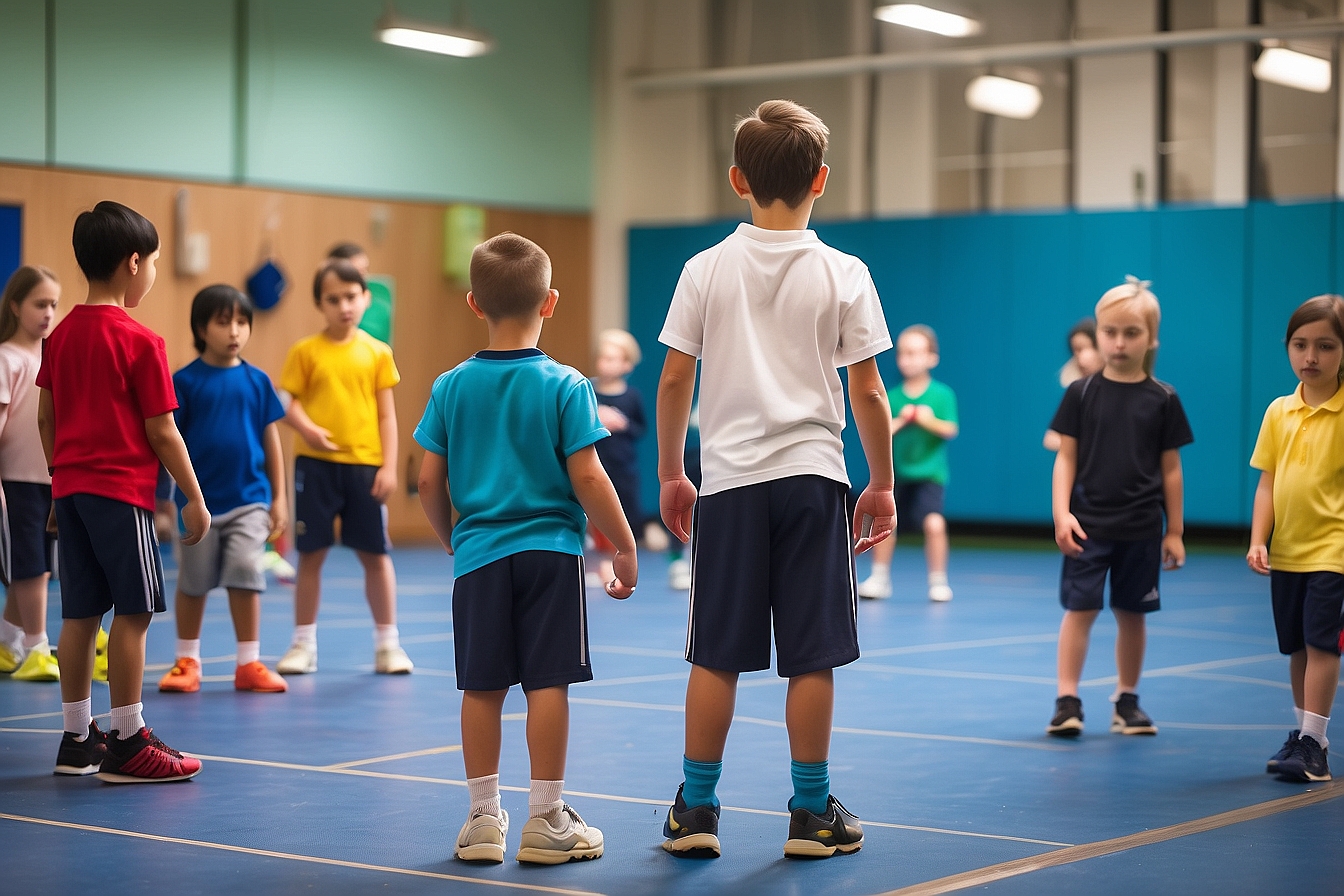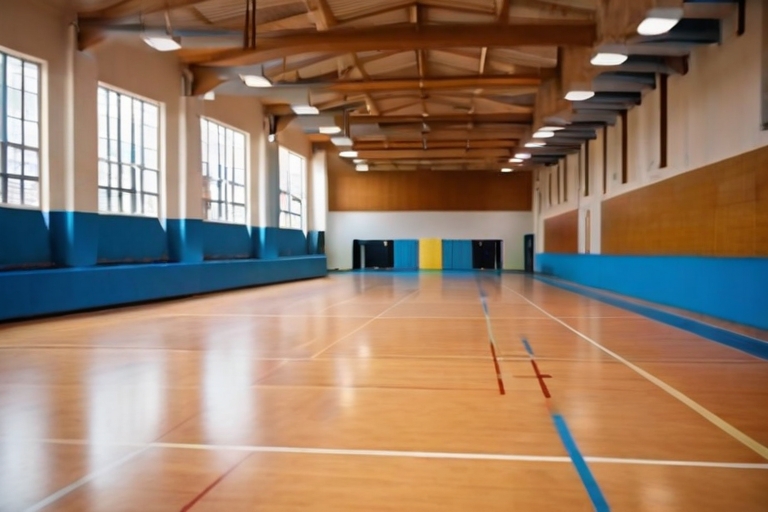
Exploring Physical Education: Strong Insights from UK Educational Statistics
Table of Contents

Introduction to Physical Education
Physical education (PE) is more than just playing games in the gym. It’s a crucial element of a holistic education, fostering physical health, mental well-being, and even academic achievement. In the UK education system, PE plays a key role in shaping healthy and well-rounded individuals. However, understanding its effectiveness requires delving into the realm of educational statistics. This article explores these statistics and their implications, aiming to shed light on the current state of PE in UK schools and potential avenues for improvement.
Before diving into the benefits of physical education, be sure to take a look at some of the excellent learning videos on the LearningMole YouTube Channel! Here is a great one on baseball!
Overview of Physical Education
Physical education encompasses a wide range of activities, from traditional team sports to individual pursuits like dance and gymnastics. It goes beyond mere physical fitness, aiming to:
- Develop motor skills and coordination: PE helps students refine basic movement patterns, agility, and balance, building a foundation for various physical activities throughout life.
- Promote social development: Teamwork, communication, and sportsmanship are fostered through collaborative activities, preparing students for effective interaction in diverse settings.
- Cultivate positive health habits: PE instils an understanding of the importance of physical activity for physical and mental well-being, encouraging healthy lifestyle choices.
Beyond these direct benefits, research suggests that regular physical activity leads to improved cognitive function, concentration, and academic performance. Therefore, PE plays a crucial role in supporting students’ overall development and success.
Physical Education Curriculum and Requirements
The National Curriculum for England outlines clear expectations for PE in both primary and secondary schools. Key components include:
- Engaging activities: Students participate in a diverse range of activities, including athletics, gymnastics, swimming, team sports, and individual pursuits.
- Health education: Understanding the importance of healthy eating, sleep, and stress management is integrated into the curriculum, fostering informed lifestyle choices.
- Assessment: Students’ progress is evaluated based on their skill development, knowledge of health principles, and participation in activities.
While these guidelines provide a framework, schools have some flexibility in designing their PE programs. However, resource constraints and competing priorities sometimes pose challenges in ensuring high-quality provision.
Physical Education Statistics in the UK
Understanding the current state of PE requires diving into relevant statistics:
- Participation: As of 2022, over 90% of primary school pupils partake in at least 30 minutes of PE most days of the week. However, secondary school participation drops to around 60%, highlighting a concerning decline in older age groups.
- Frequency: While participation rates offer a starting point, understanding activity intensity and duration is crucial. Studies suggest that only one in three children in the UK meet recommended activity levels.
- Regional disparities: Participation and activity levels vary across regions, with urban areas often facing greater challenges due to limited access to facilities and green spaces.
These statistics paint a mixed picture, indicating progress in primary schools but concerning trends in secondary education. Addressing these disparities and promoting consistent, active engagement remain key priorities.

Participation in Physical Education by Demographic Groups
Participation in PE isn’t uniform across all groups:
- Gender: Girls tend to participate less than boys, particularly in secondary school, indicating the need for strategies to address gender stereotypes and create inclusive sporting environments.
- Ethnicity: Minority groups often face lower participation rates, highlighting the importance of culturally sensitive approaches and outreach programs.
- Socioeconomic status: Students from disadvantaged backgrounds may experience barriers to participation due to limited access to facilities, equipment, and transportation.
Understanding these disparities is crucial to ensure that all students have equal opportunities to benefit from PE’s positive impact.
Benefits of Physical Education
The benefits of regular PE extend far beyond just physical fitness:
- Improved physical health: PE helps lower the risk of obesity, diabetes, and cardiovascular diseases, promoting lifelong health and well-being.
- Enhanced mental well-being: Physical activity reduces stress, anxiety, and depression, contributing to positive mental health and emotional resilience.
- Boosted academic performance: Studies show a link between physical activity and improved cognitive function, memory, and academic achievement.
- Developed social skills: Teamwork, communication, and leadership skills nurtured through PE activities translate to success in various social settings.
These benefits highlight the multifaceted impact of PE and its crucial role in fostering well-rounded individuals.
Challenges in Physical Education Provision
While the importance of physical education is undeniable, its effective delivery in schools faces a multitude of challenges. Here’s a more detailed exploration of the primary hurdles:
Resource Constraints:
- Facilities and equipment: Many schools lack dedicated spaces and modern equipment for diverse PE activities, hindering program variety and student engagement. Outdated or insufficient facilities discourage participation and limit the potential for developing specific skills.
- Qualified PE teachers: The recruitment and retention of qualified PE teachers is a concern, particularly in disadvantaged areas. This shortage leads to larger class sizes, reduced individual attention, and potentially lower-quality instruction.
- Funding limitations: Inadequate funding restricts schools’ ability to invest in facilities, equipment, teacher training, and innovative programs, perpetuating a cycle of limited resources and hindering improvement efforts.
Time Constraints:
- Competing academic priorities: The pressure to achieve in standardised tests often leads to timetabling conflicts, pushing PE to the margins of the school day or even being sidelined altogether. This reduced allocation restricts opportunities for physical activity and undermines its recognised benefits for cognitive function and academic performance.
- Logistical challenges: Changing into PE attire, travelling to facilities, and showering afterwards can eat into already limited allocated time, further diminishing the duration of active engagement.
- Curriculum pressure: The increasingly crowded curriculum leaves little room for flexibility, making it difficult to integrate physical activity organically beyond dedicated PE sessions.
Assessment and Evaluation:
- Overemphasis on standardised testing: The current assessment system primarily focuses on academic subjects, neglecting the broader educational value of PE. This lack of recognition reduces its perceived importance and limits opportunities for innovation in teaching and learning approaches.
- Limited assessment tools: Traditional assessment methods in PE often focus on basic skills and participation, with less emphasis on transferable skills like teamwork, leadership, and problem-solving. This narrow assessment approach fails to capture the full spectrum of benefits PE offers.
- Teacher workload: Developing and implementing robust assessment practices for PE adds to teachers’ already heavy workload, creating barriers to effective evaluation and feedback for students.
Additional Challenges:
- Negative student perceptions: Some students might lack enthusiasm for PE due to negative past experiences, perceived lack of relevance, or concerns about body image and social comparison. Addressing these perceptions requires inclusive and personalised approaches.
- Accessibility and inclusion: Students with disabilities or special needs might face physical or logistical barriers to participation, requiring adaptations and differentiated teaching strategies to ensure inclusive PE experiences for all.
- Parental attitudes: Parental support and encouragement significantly influence children’s participation in physical activity. Addressing negative attitudes or lack of awareness among parents can promote positive engagement with PE at home and school.
Overcoming Challenges for Physical Education
While the challenges discussed previously paint a complex picture, overcoming them isn’t impossible. Here’s an exploration of potential solutions and initiatives to enhance physical education provision:
Addressing Resource Constraints:
- Increased funding: Advocacy efforts at local and national levels can push for increased government funding specifically allocated to PE. Public-private partnerships, fundraising initiatives, and community collaborations can supplement resources for facilities, equipment, and qualified teachers.
- Innovative resource sharing: Sharing facilities and equipment between schools, partnering with community sports clubs, and utilising outdoor spaces creatively can maximise resource utilisation and expand activity options.
- Technology integration: Utilise online platforms for professional development, resource sharing, and virtual coaching opportunities, reducing dependence on physical resources and facilitating collaboration.
Optimising Time Allocation:
- Curriculum integration: Embed physical activity throughout the school day through short bursts of movement breaks, active learning strategies, and cross-curricular projects that incorporate physical movement.
- Flexible timetabling: Explore alternative scheduling options like extended sessions, before- or after-school programs, or integrated “active mornings” to increase dedicated PE time without sacrificing academic hours.
- Community partnerships: Utilise local sports facilities and parks for outdoor activities, collaborating with community organisations to extend physical activity opportunities beyond school hours.
Enhancing Assessment and Evaluation:
- Develop holistic assessment tools: Focus on assessing transferable skills like teamwork, problem-solving, communication, and leadership alongside basic motor skills and participation. Utilise peer assessment, self-reflection, and portfolio-based approaches for a more comprehensive evaluation.
- Technology-aided assessment: Utilise wearable technology and apps to track progress, provide personalised feedback, and gamify assessment, making it engaging and data-driven.
- Promote collaborative assessment: Encourage collaboration between PE teachers and other subject teachers to integrate physical activity and skills assessment into cross-curricular projects.
Promoting Inclusivity and Engagement:
- Differentiated instruction: Implement personalised learning plans, cater to diverse learning styles and abilities, and offer a variety of activity choices to ensure all students find enjoyment and success in PE.
- Positive and inclusive teaching: Build a supportive and encouraging learning environment that celebrates effort, progress, and individual strengths rather than solely focusing on competition or standardised performance.
- Address negative perceptions: Organise workshops and awareness campaigns to combat negative stereotypes and promote the intrinsic value of physical activity for physical and mental well-being.
- Parental engagement: Collaborate with parents to provide resources, encourage home-based physical activity, and promote positive attitudes towards PE.
Additional Strategies:
- Professional development: Invest in ongoing training and professional development for PE teachers on innovative teaching methods, assessment practices, and inclusive strategies.
- Mentorship and peer support: Facilitate peer-to-peer learning and mentorship programs among PE teachers to share best practices and address challenges collaboratively.
- Data-driven decision-making: Regularly collect and analyse data on participation rates, student outcomes, and program effectiveness to inform continuous improvement efforts and assess the impact of interventions.

Initiatives and Interventions for Physical Education
Numerous initiatives aim to tackle these challenges and promote active lifestyles:
- School Sport England: This government agency funds various programs, including after-school clubs, competitions, and teacher training, to encourage participation in sports.
- Youth Sport Action Groups: These local networks of organisations collaborate to increase sporting opportunities and tackle inequalities in access to physical activity.
- Active Travel initiatives: Encouraging children to walk, cycle, or scoot to school promotes physical activity and reduces reliance on cars.
Evaluating the effectiveness of these initiatives and scaling up successful models can significantly impact PE provision and student well-being.
Policy Implications and Interventions for Physical Education
Evidence-based policymaking is crucial to improve PE:
- National guidelines: Regularly reviewing and updating national curriculum guidelines can ensure PE remains relevant, engaging, and aligned with current health and education priorities.
- Targeted funding: Allocating resources to address regional disparities and support schools facing greater challenges can promote equity in access to quality PE.
- Data collection and analysis: Regularly monitoring participation rates, activity levels, and student outcomes can inform effective policy decisions and interventions.
Collaboration between government agencies, educational institutions, and community organisations is vital to creating a supportive environment for effective PE provision.
Future Directions and Challenges to Physical Education
PE faces evolving opportunities and challenges:
- Technology integration: Using technology for fitness tracking, interactive games, and personalised learning can enhance engagement and cater to diverse learning styles.
- Community partnerships: Collaborating with local sports clubs, health facilities, and parks can offer wider access to activities and expertise.
- Addressing inactivity trends: Countering increasing screen time and sedentary lifestyles requires innovative outreach programs and promoting the intrinsic value of physical activity.
Embracing these developments and addressing emerging challenges will ensure PE remains a vibrant and impactful element of education, preparing future generations for healthy and active lives.
Conclusions for Physical Education
Physical education statistics offer valuable insights into the current state of PE in UK schools. While some statistics provide cause for concern, others highlight positive trends and ongoing efforts to improve. By understanding the challenges and opportunities, policymakers, educators, and stakeholders can work together to prioritise PE, ensuring all students have access to this vital component of a holistic education. Investing in quality PE provision can empower students to lead healthy, active, and fulfilling lives, contributing to a healthier and more vibrant society overall.
If you have enjoyed this blog post be sure to check out some of our other insightful articles at LearningMole! If you are further interested in Educational content be sure to check out our post about Educational statistics!


Leave a Reply